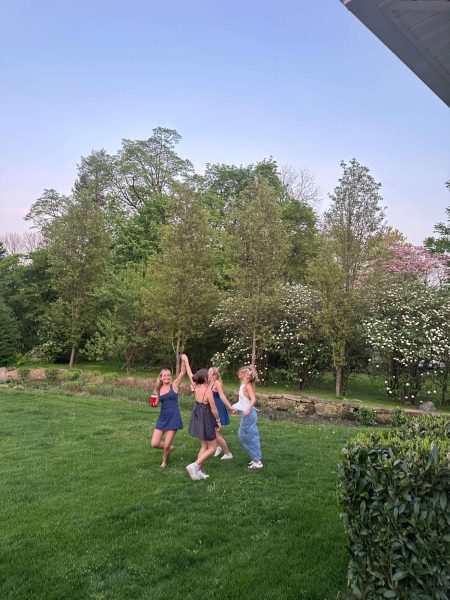#LetsMarchNova: Villanovans at the Women’s March

January 24, 2017
On Saturday, Jan. 21, millions of women in all 50 states and more than 20 countries partook in a series of women’s marches that spanned over 673 cities worldwide. In some cities, hundreds of thousands of women gathered to rally for women’s reproductive rights, improved paid maternity leave and the right to equal pay for equal work. The marches, which were vastly inclusive, also sought to promote the rights of immigrants, refugees, people of color and the LGBTQ+ community—additionally, they sought to garner support for protection of the Affordable Care Act, as well as the protection and expansion of efforts aimed at protecting of the environment.
In Philadelphia, the Women’s March boasted a crowd of more than 50,000 women, men and children, including many Villanova students and faculty members.
As anyone waiting at Villanova’s SEPTA station last Saturday knows, more than a dozen students and Villanova residents gathered, carrying signs and posters with slogans like “women’s rights are human rights” and donning “Nasty Woman” tee shirts, prepared to make their way to Philadelphia for the march. Unfortunately, the eager marchers were stuck waiting for their train for nearly an hour due to delays caused by the massive number of people heading to Center City for the event. The hour I spent waiting for the train with the other marchers gave me the opportunity to speak to a fellow student about what the march meant to her.
Emily Margolin ’20 was among the group of Villanovans headed to the Women’s March in Philadelphia, and it was with her that I discussed the importance of such a demonstration, as well as how the discussion of women’s rights can be brought to the forefront, both in our nation as a whole and here at the University.
“This march is an opportunity for us to band together to express our discontent with our current political climate,” Margolin said. “I’m marching not only to defend my rights as a woman, but to stand in solidarity with my friends who have been affected by President Trump’s rhetoric, including both racial and religious minorities, members of the LGBTQ+ community and immigrants.”
The marches, which took place just a day after President Trump’s inauguration, were not intended to protest the new president, but, rather, to send a message of inclusion and equality to the administration.
“Contrary to the popular belief, the march isn’t an attempt to change the president,” Margolin explained. “It was organized as a way for people to band together in their shared discontent and send a message to the new administration, as if to say, ‘Hey, you said some pretty terrible things during the campaign, and we just want to tell you that if you go through with them, we will resist.’”
After discussing the multi-faceted purpose of these marches and rallies on a larger, national and global scale, we began to discuss the importance of bringing attention to women’s issues on campus. “Not really,” Margolin responded when I asked her if she felt that issues concerning women’s rights and gender parity are prominently addressed here at the University. “But I came from an all-girls high school, so my expectations were high, but I don’t think the disadvantages many women face because of their gender are emphasized enough, whether that be on campus or in the world.”
“A lot of time people write off sexism,” Margolin explained. “They think it’s not prevalent today because they haven’t experienced it first-hand. Yet, in my experience, every girl I’ve met has dealt with sexism first-hand. In my ACS class last semester, our professor asked us to raise our hand if we had ever been discriminated against because of gender. Every girl raised her hand. While Villanova is making an effort to draw attention to this issue, it won’t be enough until women are viewed as equal to men everywhere.”
We then discussed the ways in which Villanova students and faculty members can work to create a better dialogue about women’s rights and inclusivity for all groups here at the University. In Margolin’s opinion, “We just need to talk about it more” in order to create change.
“We have to have these conversations if we want to change anything,” she said. “In the context of class, I think it’s important to highlight the struggles of women in relation to the topics being discussed, whether that be mentioning the women’s suffrage movement in history class or giving a shout out to Marie Curie in chemistry, it’s important to give credit where credit is due and to say, ‘You know this thing we take for granted? A woman did or made that!’ It all starts with a conversation.”
Indeed, a conversation is all it takes, and it seems as though these women’s marches, which all started with a conversation that a few women had about how they could call to attention the rights of women, have sparked a global conversation about equality and inclusivity, not just for women, but for all people. These marches hopefully, and most likely, have created a dialogue that will last well beyond the one-day demonstrations and spur all those who marched, and even those who didn’t, to take action every day to create real and lasting change, both here in America, in places like college campuses like ours and all around the world.











